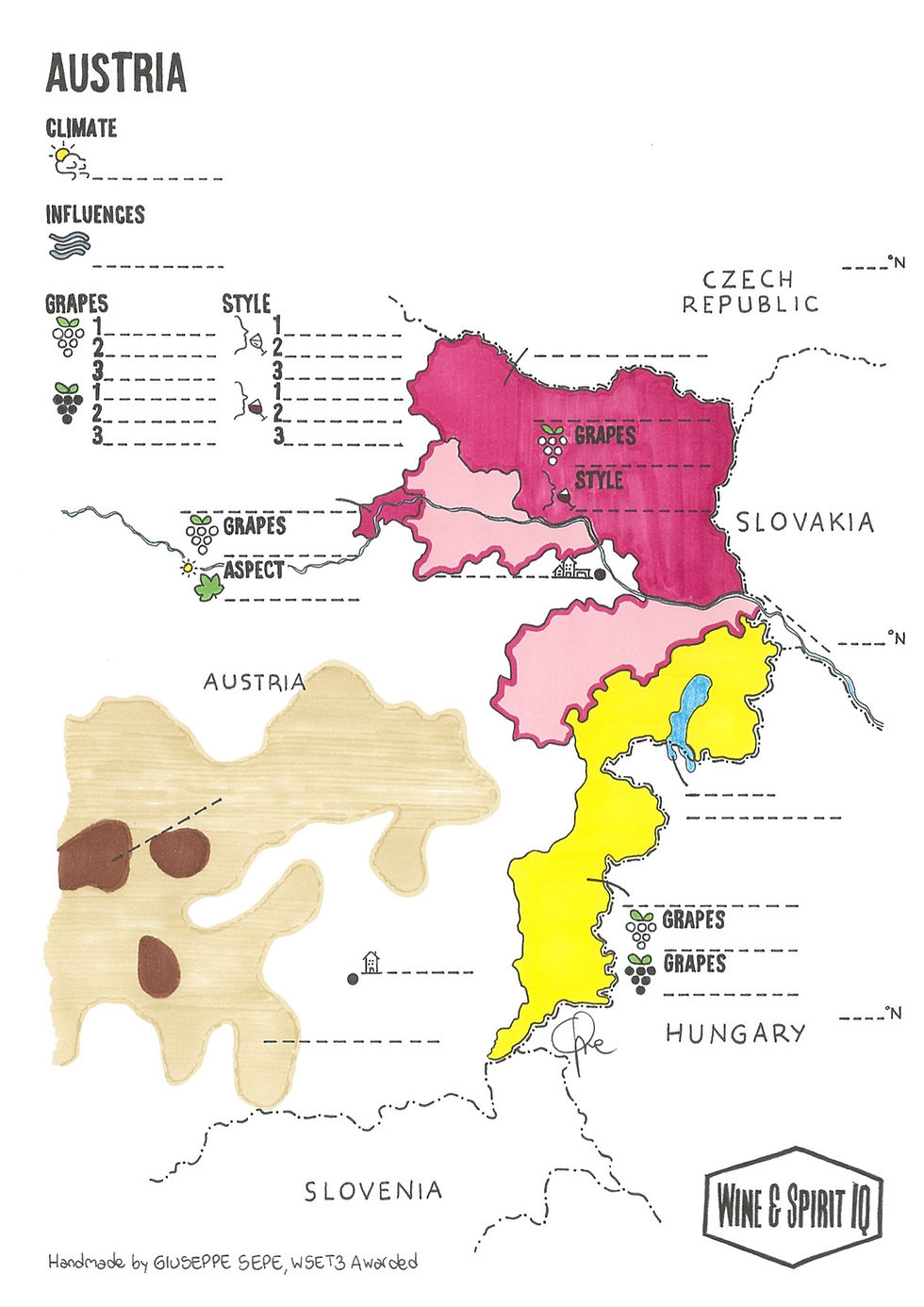Grüner Veltliner
- Chris

- Mar 27, 2021
- 2 min read
Updated: Aug 24, 2021
Austrian grape par excellence, Grüner Veltliner AKA Weißgipfler, "GV", "Gru-Ve" has obscure origins. Almost unheard of outside of Austria until the last couple of decades, it is today a must have on any serious restaurant wine list and adventurous viticulturists are experimenting with it in New Zealand, Australia, California and Oregon.

In the local language, Grüner Veltliner means green (grape) from Veltlin - a name pointing to Valtellina, located in the south of today's Italian Tyrol, but research has failed to find further evidence of this possible birthplace. Years ago, DNA profiling revealed that Traminer (also known as Savagnin in Jura) is one of GV's parents, but it wasn't until recently that the other parent was identified by: St Georgen: an almost forgotten vine found in Burgenland in 2000!
Traminer & St Georgen... How these two met and cross-pollinized? We may never know, but with some 14,000 ha of planting in Austria, Grüner Veltliner definitely a child of Austria, just like Sigmund Freud, Mozart or Shubert!
Depending where it grows, Grüner Veltliner is made in a variety of styles. From the every day wine harvested on high yielding vines planted on the flat lands anywhere in Niederösterreich, to the rich, concentrated "smaragd-style" from low yielding ripe grapes grown on the south-facing well-drained terraces of Wachau, Kremstal or Kamptal. There, Grüner Veltliner it is never too far from Riesling.
The most often cited descriptor for this grape is white pepper, with vegetal notes such as asparagus, sweet pea, lentils, green bean... (and even cornichon!). Herbaceous notes often come up: (fennel, celery, sage). Floral fragrances (blossom, iris) or citrus scents (lime, lemon, grapefruit) are common. Other fruity aromas can vary from green apple to pear, mirabelle, nectarine, melon or star fruit when the grapes are riper. Minerality is sometimes mentioned (flint, wet stone and crushed gravel). Nutmeg and honey may occur with bottle ageing.
The palate is most often bone dry with high acidity and variable levels of alcohol. Some producers will age Grüner on lees for a lil' more texture and body, but new oak is almost never used.
To learn more about grape varieties, where they grow and how they taste, book your seat the next WSET course .
Sources:
Austrian Wine Marketing Board (2020) Austrian Wine In Depth, Vienna: Austrian Wine Marketing Board Clarke, O. & Rand, M. (2015) Grapes & Wines. New York: Sterling Epicure
Robinson, J. (2015) The Oxford Companion to Wine. New York: Oxford University Press Inc
Wein Burgenland Website (http://weinburgenland.at/fileadmin/user_upload/Download/Anhaenge/St__Georgen_Vine.pdf)




Comments